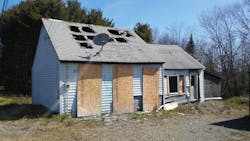Fire department training instructors have always had a critical role in fire departments. Whether training volunteer firefighters, rookies at academies, or career firefighters in an ever-changing world, the job is more complex and difficult than ever. Trainers must anticipate skills required to respond to an increasing array of responsibilities, variable hazards, contaminants and human beings.
Training exercises have progressed over the years. Some parts of the country still allow fire departments to burn vacant houses and other properties for training. In other areas, the Environmental Protection Agency and local agencies have made it difficult to train on or burn vacant structures. While some still believe “There’s nothing more realistic for training,” that sentiment is not as common as it was a few decades ago.
In the early ‘80s, fire department training opportunities grew as new state, regional and county training academies increased across the country. The demand for frequent and expanded training was due to the broader range of fire department responsibilities, including high-rise, confined space and hazardous materials. Firefighter training also became more standardized, developed certification levels and the NFPA.
However, in the late ‘90s, centralized training for firefighters changed for smaller departments. Volunteer and rural fire departments were struggling and could not afford the costs or the time to drive to a regional or county training facility. Fire departments looked for ways to continue to train, but more affordable and in their own locale.
The turning point
In 2005, in response to the need for more localized training, an architect with Cole + Russell Architects (now CR Architecture + Design) wrote an article for Fire Chief Magazine, titled Training by Design. The article described ways to incorporate more training opportunities, particularly for volunteer and rural fire stations, into new fire station designs. The suggestions included multi-use mezzanines, hose towers outfitted or re-designed for use as training towers with interior and exterior access and concrete construction materials that could be used for below-grade training options.
Fifteen years later, department training personnel are actively involved in developing onsite training sites and classrooms in new fire stations. At the 2022 Station Design Conference, David Arends, CEO, of CR Architecture + Design will present further updates to the Training by Design program.
In a conversation I had last month with Ken Willette, executive director, North American Fire Training Directors (NAFTD), he mentioned that he had read the conference program and noticed several presentations on training facilities. “Is the conference applicable to training officers also?” he asked.
Willette was right in asking if training directors or instructors would benefit from the Station Design Conference. Review the conference program and decide for yourself. Besides the Arends program mentioned above, other options include designing training facilities and shared training facilities with fire, EMS and law enforcement.
Keep it clean
One other element fire training directors, instructors and officers should be aware of and incorporate is the critical step of “clean” after a training exercise, especially if potential cancer-causing carcinogens are involved. The Station Design Conference offers several presentations on designing facilities on the safety and health of firefighters, including decontamination of turnout gear, showering and decon of equipment.
Public Safety shared facilities are a growing trend. Not only are the cost savings significant for departments and municipalities, but benefits also include increased security and technology, improvements in coordinated incident response and increased communication between agencies.
Training officers and instructors are critical to teaching how to safely save lives, particularly firefighters. If trainers can contribute to the design of a facility to improve skills and safety, they should be included in the design team of a new or renovated facility.
The wealth of training required for firefighters this century is certainly complex, and part of the training sessions must include steps on being proactive to protect the health of firefighters.
####
Photos courtesy of Vicki Schmidt, Instructor, Maine Fire Services
About the Author
Janet A. Wilmoth
Special Projects Director
Janet Wilmoth grew up in a family of firefighters in a suburb of Chicago. Wilmoth, who is owner of Wilmoth Associates, worked with Fire Chief magazine for 27 years until it closed in 2013. She currently is the project director for Firehouse, overseeing the Station Design Conference.

